The purest, most highly distilled, ultra-concentrated motorcycle-riding goodness is really found in only one place on Earth: the Alps. The roads, the scenery, the history, the people, the food and, yes, even the bikes built nearby offer the kind of fun, inspiration and intensity that draws us to motorcycling in the first place. And keeps us there for life.Without question, the high passes of Europe are a playground like no other. Part of the character can be accounted for by virtue of the time when most of these old roads were made. There simply wasn’t enough dynamite and heavy equipment to ignore all the fabulous terrain and blast tunnels or pummel peaks into submission. The geology was just too grand. These days, sure, there are plenty of tunnels, but who in their right mind would take a straight hole in the ground when there was an alternative with dozens of switchbacks?
To ease planning and to concentrate on riding, my wife Jen and I enlisted the world's foremost motorcycle-touring experts, Edelweiss Bike Travel (www.edelweissbike.com; 011-43-5264-5690), and signed up for the High Alps Tour, an eight-day trip with six days of riding over 15 to 25 eastern Alpine passes, count varying depending on what you call a "pass" and what you choose to do on the "rest" day in Bolzano, Italy. Start was near BMW HQ in Munich, then riding through Austria, Italy, Liechtenstein, Switzerland and back to Germany. The 30-year-old company runs tours all around the world (including an actual around-the-world tour this year!) but Europe is its home turf.
Stated output for the 1170cc flat-Twin is 110 hp and 88 ft.-lb. of torque. New dohc heads have broadened the torque spread and smoothed engine response. Efficiency was also good, the bike delivering 45 mpg over the course of the trip.
Our recent trip through the Alps proved that almost any two-wheeler will do the job if you want it to. We saw two-up-ridden Vespas, we saw a fully touring-outfitted Honda DN-01, we saw vintage English bikes and we saw lots of BMWs. So while anything might do, you can't ignore the fact that the Alps are in BMW's backyard.
After we spent six days riding an R1200RT, it's easy to see why so many riders choose Boxer-powered Beemers. There is something about the cadence of the flat-Twins that just seems right for the Alps. Fours are generally more powerful but also more frantic, and there is no doubt the new K1600s will leap tall mountains in a single bound, but riding the Alps really takes a different mindset, a different pace, than other types of riding. I've had the opportunity to righteously attack them on a Yamaha FJR1300 ("Trial by Alps," November, 2001) and the Europe-only Honda CB1000R ("Forbidden Fun," October, 2009), but I must admit to missing a lot of scenery on those two prior trips for having spent so much time with my nose pointed at the road reading tarmac.
That’s not an invalid way of experiencing the Alps, but it misses so much. Ripping it up like that also carries risks in the mountains of Europe that are somewhat different than on the roads in other places. Buses, bicyclists, sightseer cars and even summer-training cross-country skiers (on rollers) are plentiful, as are cattle—and their waste products! The road surfaces vary from incredibly excellent to treacherously bumpy, with camouflaged gravel and/or moisture and wet leaves hiding in the shadows to keep it interesting. It adds up to what my old boss and experienced Alps man, David Edwards, called “the Alps pace.” Edwards has a rare combination of swiftness and safety, and my consult with him prior to my first FJR trip years ago proved immensely helpful then and still does today. It’s also great to have Edelweiss tour guides who live these roads every day on hand for advice. Alternatively, you can book the Alps Riding Training course one day prior to tour departure.
The RT feels made for this type of riding, especially this Premium-package-equipped machine. Base price for this model is $17,000, but “Premium” bumps it to $19,195. Accessory bits are: heated seats and grips; BMW Navigator IV GPS by Garmin; Electronic Suspen-sion Adjustment II; cruise control; power socket; on-board computer (trip and fuel range calculations, etc.); and white turnsignals. Additional optional equipment was Automatic Stability Control ($400), Tire Pressure Monitor ($250) and radio/CD player with USB/3.5mm/iPod input ($1645).
The big news on the bike in 2010 was the addition of the dohc cylinder heads as first fitted to the HP2 Sport (though these upated versions are twin-sparkplug, replacing the single-plug design of the HP2). Displacement of 1170cc remains, but the bigger valves and different cam specs have resulted in an amazing transformation of this mill in touring use. The engine is remarkably smoother at low revs and offers a good deal more torque off the bottom than its predecessor. It was easy to idle down to 1500 rpm and pull smartly and smoothly away, even in the tall sixth gear. On the loud end of the scale, too, it is freer-revving and pulls harder and longer toward its new 500-rpm-higher rev limit of 8500.
We had much of both types of riding. Climbing up foggy, rainy Grossglockner Pass on the first day leaving the Munich area and headed to Lienz, Austria, called for ultra-precise throttle and clutch work in the slick, treacherous conditions. EFI response was totally predictable and torque was easy to modulate. The clutch feel was very good, and trailing the brake to the apex to help control the lean and arc of the bike was exceptionally easy. The flat-Twin never hiccupped, returned 45 mpg and gave an easy 200-mile-plus range from its 6.6-gallon fuel tank.
We were blessed with sunshine and dry roads when we attacked the epic Passo dello Stelvio, perhaps the most famous pass of all because of its roughly 87 switchbacks (depends who you ask and I was too busy to count myself!). It tops out at more than 9000 feet and is the highest pass in the eastern Alps—and as such is as close to heaven as you may ever get on a motorcycle. The RT showed great composure as we climbed the “tight” eastern side, even if it also showed its weight. Over the course of the tour, the ESA II suspension (controls front and rear spring preload and rebound damping) was almost always set to Sport (and with the “two helmets” for rider and passenger loading). After trying both the Comfort and Normal settings, the composure and even “comfort” of the stiffer setup was our preference. The actual Comfort setting was supple, but on a really bumpy road where you’d think it would be best, there was too much chassis pitch. Even Normal had excessive chassis movement with our full-luggage/two-up weight upon it. So Sport it was, given our load and sporting pace.
BMW Navigator IV GPS is a nice accessory, but your favorite passenger with a map is far more indispensible. Flat-Twin Beemers offer a surprisingly light feel thanks to a low center of gravity. Claimed wet weight of the R1200RT without bags is 570 pounds.
In town, the Telelever front end’s geometrically controlled anti-dive was nice, particularly in stop-and-go traffic because it eliminated the dive/rebound of a conventional fork when coming to a halt. In corners at speed, the amount of feedback isn’t as high as with a good conventional fork, but many of us are willing to make this minor trade. I almost didn’t write a word about the brakes because they never did a wrong thing. Again, feel could be better, but the lever and brake action were 100 percent consistent, even on the steep, fast, two-up descents.
Later, when Jen and I made our own post-Alps-tour loop northwest to Tübingen (a great old college town on the Neckar River), the Black Forest and the ancient walled city of Rothenburg, we found ourselves flying comfortably on the autobahn quite a lot. There are more speed limits than in the old days, but we still had some unencumbered sections to let it fly and we eventually spooled up to 125-130 mph. Definitely was necessary to raise the windscreen quite a bit, otherwise our helmets started interacting uncomfortably in the airblast. But, overall, it was surprisingly stable even if not exactly serene. It’s right about then, when you are feeling smug about passing everybody on the wonderfully lane-disciplined German highway, that you find in your mirrors a silver Mercedes gaining on you and must yield. Only, it wasn’t some AMG missile, but an E-class wagon driven by a hausfrau with her dog and kids in the back. Damn! Cool thing is, she wasn’t on the phone or doing her makeup. We tucked in behind and enjoyed the draft...
Over the week-and-a-half we traveled, weather changed, as it does in the Alps in autumn: It rained, it got hot and it got cold; but we were comfortable. The heated seat and grips turned what otherwise would have been a miserable ride chilled to the bone into a balmy-feeling jaunt. Five-foot-eleven Jen rated the passenger seat one of the best and enjoyed it much more than the accommodations of the Concours 14 we toured on a couple of years ago. She said the BMW offered more leg room and less helmet buffeting (but we have yet to try the latest C-14 with taller windscreen). She also liked the more level seat and the fact that it wasn’t raised much more than my saddle. For my 6-foot-2 part, I rode the first half of the tour with the seat in the lowest position of 30.7 inches, and then switched it to the 31.5-inch setting, which I found more comfortable and “in command.” The 32-liter saddlebags were never an issue, either. We stuffed them mightily, but the four-latch mechanism kept them shut tight and, even in the heaviest rain, they never leaked. The color-matched outers integrate the luggage nicely into the overall styling of the bike, but it definitely takes care to keep them from getting scratched if you use them like suitcases and carry up to your room (avoid this with fabric bag inserts). In any case, BMW knows luggage—no complaints.
We are spoiled for choice in the sport-touring market. There are lots of new players to take on the reigning Ten Best champ, the C-14, which redefined the sporting end of the spectrum when it was introduced in 2007. And, frankly, this RT will get smoked by the Kawasaki in pure performance terms. But, short of eyeball-flattening peak power, the RT holds up incredibly well and brings ESA and GPS to the table, not to mention better passenger accommodations and wind management. The biggest surprise offered by the RT is how much different it feels with a switch of cylinder-head design. On the trip of a lifetime in the Alps, it’s hard to think of a better choice. Given the special demands of that type of riding, it’s nice to know that the RT will be up for whatever you throw at it in your own backyard.











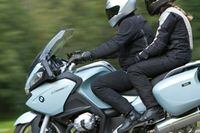

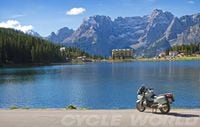
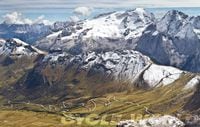

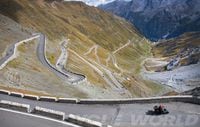

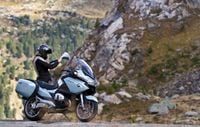
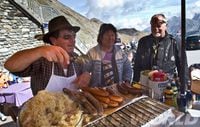

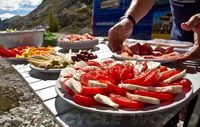
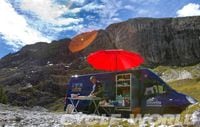

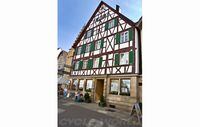
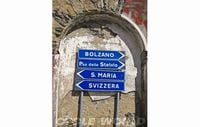

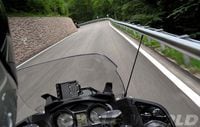

/cloudfront-us-east-1.images.arcpublishing.com/octane/H6FFG4YQMREO3DTADIJMECNS7Y.jpg)
/cloudfront-us-east-1.images.arcpublishing.com/octane/QCUUDRRAIFHDDGB5OTZVKUS554.jpg)
/cloudfront-us-east-1.images.arcpublishing.com/octane/RBDRR2OHFFBPRNXW6V3FN2SNAM.jpg)
/cloudfront-us-east-1.images.arcpublishing.com/octane/EFFSPCZVBBCMTNGVEQMB7NNKIU.jpg)
/cloudfront-us-east-1.images.arcpublishing.com/octane/5GP3PUGFKVGUVCEYG4ZBDYLNBE.jpg)
/cloudfront-us-east-1.images.arcpublishing.com/octane/USTSFGXT3ZGL7BT7B66WMSSKTI.jpg)
/cloudfront-us-east-1.images.arcpublishing.com/octane/Z7YU6FSR6NEKVMKT5CZPMKIVLE.jpg)
/cloudfront-us-east-1.images.arcpublishing.com/octane/MOP35BTV3FFANFBUJKU2RJRTZ4.jpg)
/cloudfront-us-east-1.images.arcpublishing.com/octane/UWTN4NTIJFD25MPXBOVS4DFOXE.jpg)
/cloudfront-us-east-1.images.arcpublishing.com/octane/SIFOY54XMFGEHAUYNFUYVW7IZ4.jpg)
/cloudfront-us-east-1.images.arcpublishing.com/octane/HMC5X3JZHRASXGVCVNBJBWWGSI.jpg)
/cloudfront-us-east-1.images.arcpublishing.com/octane/UIWGXRZDM5HZXJOWXET2DZIWJE.jpg)
/cloudfront-us-east-1.images.arcpublishing.com/octane/QSS5DZ6SKJEU3AKE4KDAWYBEFY.jpg)
/cloudfront-us-east-1.images.arcpublishing.com/octane/SMCEQCLWRVEFTJJES6TAHB3OOQ.jpg)
/cloudfront-us-east-1.images.arcpublishing.com/octane/JCACIDCAC5FUNPTXO2BOUHGGII.jpg)
/cloudfront-us-east-1.images.arcpublishing.com/octane/DC7ZGILA2BCJXHZIUNYGV7JSEA.jpg)
/cloudfront-us-east-1.images.arcpublishing.com/octane/EWJEZUGWEZGABDEQWB64WL46GQ.jpg)
/cloudfront-us-east-1.images.arcpublishing.com/octane/5NHBMRMSFVD5JAPFNMBMNPGXQE.jpg)
/cloudfront-us-east-1.images.arcpublishing.com/octane/WHE43SCPLJBRNANAJAGXHOAIEU.jpg)
/cloudfront-us-east-1.images.arcpublishing.com/octane/6R56AQAW6NDE7BBIJ3SMCOOY5A.jpg)
/cloudfront-us-east-1.images.arcpublishing.com/octane/JMQTUE2FKZFURJTJXDMM4V47AQ.jpg)
/cloudfront-us-east-1.images.arcpublishing.com/octane/P2QYJDMQNVEANMQFXHNB3OVFKQ.jpg)
/cloudfront-us-east-1.images.arcpublishing.com/octane/VNKGXM4AA5BPRGERJOPV6GADAQ.jpg)
/cloudfront-us-east-1.images.arcpublishing.com/octane/2WS4YIFLTNG25L25WP7ZFLSWJM.jpg)